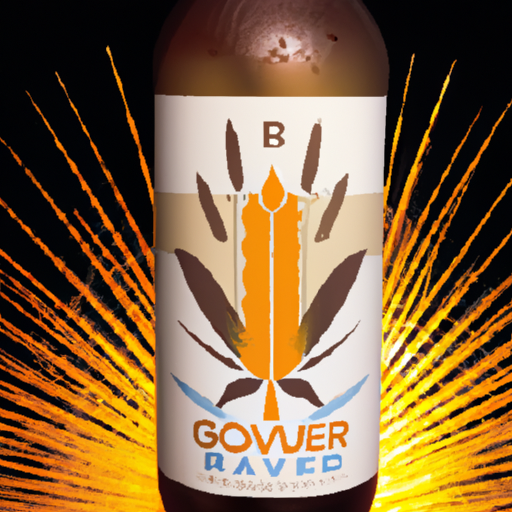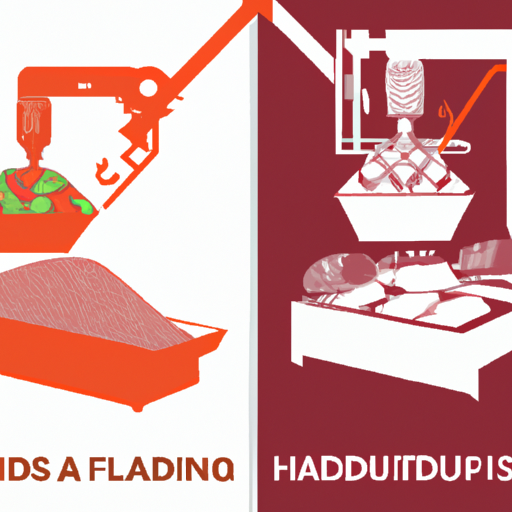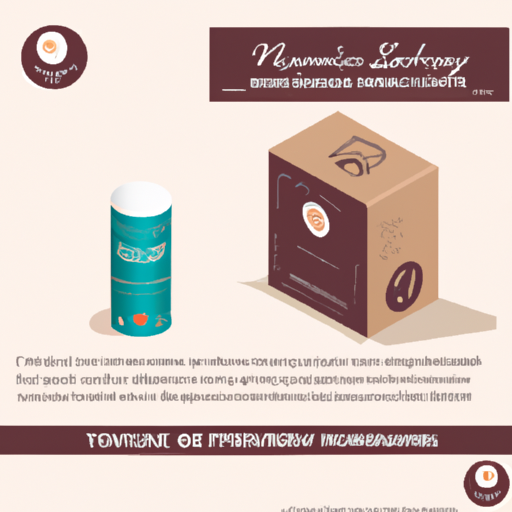Trend Forecasting
importance of trend forecastingee a new fashion trend or a popular product and wonder how it became so popular? Well, that’s where trend forecasting comes in. Trend forecasting is the process of predicting and analyzing upcoming trends in various industries, such as fashion, technology, and design. It involves taking a careful look at consumer behavior, cultural movements, and past and present trends to anticipate what will be popular in the future. Trend forecasting is not just about making educated guesses; it requires an in-depth understanding of the ever-evolving tastes and preferences of the masses. In this article, we’ll explore the world of trend forecasting and how it shapes the way we dress, consume, and live our lives.
Table of Contents
Defining Trend Forecasting
What is trend forecasting?
Trend forecasting is a process of analyzing and predicting future trends in various industries and sectors based on a thorough analysis of current and past patterns. It involves understanding the consumer’s preferences, behaviors, and cultural shifts to anticipate the direction in which markets and societies are moving. Trend forecasting helps businesses and organizations stay ahead of the curve by identifying emerging opportunities and potential threats.
The importance of trend forecasting
Trend forecasting is essential for businesses and industries to adapt and thrive in a rapidly changing world. By identifying and understanding upcoming trends, companies can make informed decisions about product development, marketing strategies, and overall business direction. Trend forecasting allows businesses to avoid being left behind by their competitors and anticipate the evolving needs and desires of their customers.
How does trend forecasting work?
Trend forecasting combines data analysis, market research, and knowledge of social, cultural, and economic factors to identify patterns and trends. It involves studying consumer behavior, monitoring popular culture, analyzing historical data, and using statistical models to predict future trends. Trend forecasters often draw insights from a wide range of sources, including fashion shows, social media trends, technology advancements, and cultural shifts.
Methods of trend forecasting
There are several methods and tools used in trend forecasting, each with its own strengths and limitations. Some common approaches include:
Qualitative Research: This involves gathering insights through interviews, focus groups, and observational studies to understand consumer preferences, opinions, and behaviors.
Quantitative Analysis: Statistical data and market research are used to identify patterns and trends and make predictions based on historical data.
Data Mining: The analysis of large datasets to identify hidden patterns and correlations that can help predict future trends.
Expert Analysis: Experienced professionals in specific industries leverage their expertise to interpret current market conditions and project future trends.
Scenario Planning: This method involves creating multiple future scenarios and assessing their likelihood of occurrence, helping to prepare companies for a range of possible outcomes.
Trends in Trend Forecasting
Current trends in trend forecasting
As trend forecasting evolves, several current trends are shaping the industry. One prominent trend is the increasing focus on sustainability and ethical considerations. Consumers are demanding more environmentally friendly and socially responsible products and services, and trend forecasters are working to identify and promote sustainable trends.
Another trend is the integration of technology, such as artificial intelligence and machine learning, into the trend forecasting process. These technologies enable more sophisticated data analysis and prediction capabilities, allowing trend forecasters to make more accurate and reliable predictions.
Emerging technologies and trend forecasting
Emerging technologies, such as virtual reality, augmented reality, and Internet of Things (IoT), are revolutionizing trend forecasting. These technologies provide new ways to gather data, monitor consumer preferences, and analyze trends in real-time. For example, virtual reality can be used to simulate consumer experiences and test new products, while IoT devices can capture and analyze data from various sources to uncover emerging trends.
Impact of social media on trend forecasting
Social media platforms have become powerful tools for trend forecasting. By monitoring conversations, hashtags, and influencers, trend forecasters can gain real-time insights into consumer preferences and emerging trends. Social media also allows for more direct engagement with consumers, enabling businesses to test new ideas and receive instant feedback. However, it is important to consider that social media trends can be volatile and short-lived, requiring trend forecasters to carefully analyze and validate the data.

Applications of Trend Forecasting
Trend forecasting in the fashion industry
Trend forecasting plays a vital role in the fashion industry. Designers, retailers, and marketers rely on trend forecasts to determine the next popular colors, patterns, styles, and materials. By staying up to date with the latest fashion trends, companies can create products that resonate with consumers and capitalize on market demand. Trend forecasting also helps fashion brands plan their collections, decide on pricing strategies, and develop marketing campaigns tailored to their target audience.
Trend forecasting in the technology sector
In the fast-paced world of technology, trend forecasting is crucial for staying ahead of the competition. Companies use trend analysis to identify emerging technologies, anticipate consumer demands, and develop innovative products and services. By accurately predicting technological trends, businesses can invest in research and development, form strategic partnerships, and make informed decisions about product roadmaps. Trend forecasting also helps technology companies adapt to changing market dynamics and ensure long-term success.
Trend forecasting in marketing and advertising
Trend forecasting is an invaluable tool for marketers and advertisers to create effective campaigns that resonate with their target audience. By understanding consumer trends and preferences, marketers can tailor their messaging, imagery, and promotional strategies to connect with consumers on a deeper level. Trend forecasts also help marketers identify emerging platforms, such as social media channels or influencer marketing, to reach their target audience more effectively.
Challenges in Trend Forecasting
Data collection and analysis
One of the main challenges in trend forecasting is collecting and analyzing vast amounts of data from multiple sources. Trend forecasters need to identify reliable data sources, validate the information, and analyze it accurately. The availability of big data has facilitated trend forecasting but also created challenges in managing and processing the data.
Accuracy of predictions
Accurately predicting trends is a difficult task, as it requires foresight and an understanding of various complex factors. Trend forecasters analyze multiple variables, including consumer behavior, cultural shifts, and economic factors, to make predictions. However, factors such as unexpected events, changing consumer preferences, and disruptive innovations can significantly impact the accuracy of predictions.
Ethical considerations of trend forecasting
Trend forecasting raises ethical concerns related to privacy, manipulation, and cultural appropriation. Gathering personal information from consumers to predict trends raises privacy concerns, and the manipulation of trends can have unintended consequences. Additionally, the appropriation of cultural trends without proper recognition and respect can lead to cultural insensitivity and backlash.
Balancing short-term and long-term trends
Another challenge in trend forecasting is striking a balance between short-term trends and long-term shifts. While short-term trends may offer immediate opportunities, it is also crucial for businesses to identify and adapt to long-term changes in consumer behavior and market dynamics. Balancing both perspectives is essential for businesses to remain relevant and sustainable in the long run.
Impact of Trend Forecasting
Influence on consumer behavior
Trend forecasting has a significant influence on consumer behavior. By predicting and promoting trends, trend forecasters shape consumer preferences and desires. Consumers often look to trend forecasts for guidance and seek to align their choices with emerging trends. As a result, trend forecasting leads to changes in consumer purchasing decisions and lifestyle choices.
Effect on business strategies
Trend forecasting directly impacts business strategies across various industries. It helps companies identify new market opportunities, develop innovative products, and optimize their supply chains. Trend forecasts also guide pricing strategies, marketing campaigns, and brand positioning efforts. By aligning their strategies with emerging trends, companies can gain a competitive edge and establish themselves as industry leaders.
Societal impact of trend forecasting
Beyond its influence on business strategies, trend forecasting also has a broader societal impact. By predicting cultural and social shifts, trend forecasters contribute to the evolution of society and cultural norms. Trend forecasts can promote sustainability, diversity, and inclusivity, fostering positive changes in society. However, it is essential for trend forecasters to approach their work responsibly to avoid promoting harmful stereotypes or reinforcing negative cultural dynamics.
Future of Trend Forecasting
Advancements in trend forecasting
The future of trend forecasting holds exciting advancements driven by technology and data analytics. The increasing availability of big data and artificial intelligence is expected to enhance the accuracy and efficiency of trend forecasts. Machine learning algorithms will improve predictions by continuously learning from data patterns, enabling trend forecasters to make more reliable predictions.
Integration of AI and machine learning
The integration of AI and machine learning will revolutionize trend forecasting by enabling real-time analysis of vast amounts of data. AI-powered algorithms can process data faster, identify patterns, and predict trends more accurately than traditional methods. As AI continues to advance, trend forecasters will have access to powerful tools that can generate valuable insights and help businesses make data-driven decisions.
Predictions for the future of trend forecasting
In the future, trend forecasting is expected to become more personalized and interactive. With the increasing integration of technology into everyday life, trend forecasters will be able to gather real-time data on individual preferences and behaviors. This data will enable personalized trend recommendations and customized product offerings. Additionally, virtual reality and augmented reality technologies will allow consumers to participate directly in trend forecasting, providing real-time feedback and influencing emerging trends.
In conclusion, trend forecasting plays a crucial role in helping businesses and industries adapt to changing consumer preferences and market dynamics. It involves analyzing current and past patterns, utilizing various methods and tools, and predicting future trends. Trend forecasting impacts consumer behavior, business strategies, and society as a whole. As advancements in technology and data analytics continue, the future of trend forecasting holds even more exciting opportunities for businesses and consumers alike.






